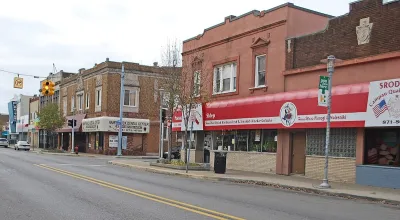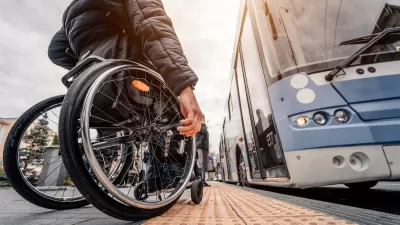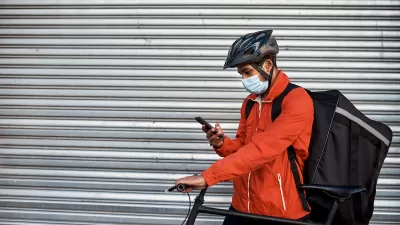A study reveals that the density of city blocks is a significant factor in communities’ walkability and, subsequently, improved public health outcomes for residents.

New research affirms the connection between walkable communities and improved health outcomes for residents, reports Emilio Perez Ibarguen in Great Lakes Echo.
Researchers from Michigan State University wanted to understand the more specific factors that impact public health to better inform policymakers. Of the four factors that typically define walkability — size of blocks, proximity to transit stops, variety of business types, and variety of zoning types — “The density of street intersections – corresponding closely to the size of blocks in the area – had the greatest impact on obesity.”
The study also found that factors unrelated to urban design, such as socioeconomic status and race, had more significant impacts on health than walkability.
The article includes information about Michigan cities that are working to improve their walkability and make their streets safer for pedestrians. The small Detroit enclave of Hamtramck, population 28,400, is the most walkable in the state. While its small size is an advantage, the town has also taken actions such as allowing mixed-use buildings. But a lack of transit connectivity to bigger cities and other regions can stifle the potential of small towns, where people remain dependent on cars for transportation outside the city.
FULL STORY: Walkable communities associated with better health, study shows

Planetizen Federal Action Tracker
A weekly monitor of how Trump’s orders and actions are impacting planners and planning in America.

Congressman Proposes Bill to Rename DC Metro “Trump Train”
The Make Autorail Great Again Act would withhold federal funding to the system until the Washington Metropolitan Area Transit Authority (WMATA), rebrands as the Washington Metropolitan Authority for Greater Access (WMAGA).

The Simple Legislative Tool Transforming Vacant Downtowns
In California, Michigan and Georgia, an easy win is bringing dollars — and delight — back to city centers.

The States Losing Rural Delivery Rooms at an Alarming Pace
In some states, as few as 9% of rural hospitals still deliver babies. As a result, rising pre-term births, no adequate pre-term care and "harrowing" close calls are a growing reality.

The Small South Asian Republic Going all in on EVs
Thanks to one simple policy change less than five years ago, 65% of new cars in this Himalayan country are now electric.

DC Backpedals on Bike Lane Protection, Swaps Barriers for Paint
Citing aesthetic concerns, the city is removing the concrete barriers and flexposts that once separated Arizona Avenue cyclists from motor vehicles.
Urban Design for Planners 1: Software Tools
This six-course series explores essential urban design concepts using open source software and equips planners with the tools they need to participate fully in the urban design process.
Planning for Universal Design
Learn the tools for implementing Universal Design in planning regulations.
Smith Gee Studio
City of Charlotte
City of Camden Redevelopment Agency
City of Astoria
Transportation Research & Education Center (TREC) at Portland State University
US High Speed Rail Association
City of Camden Redevelopment Agency
Municipality of Princeton (NJ)





























